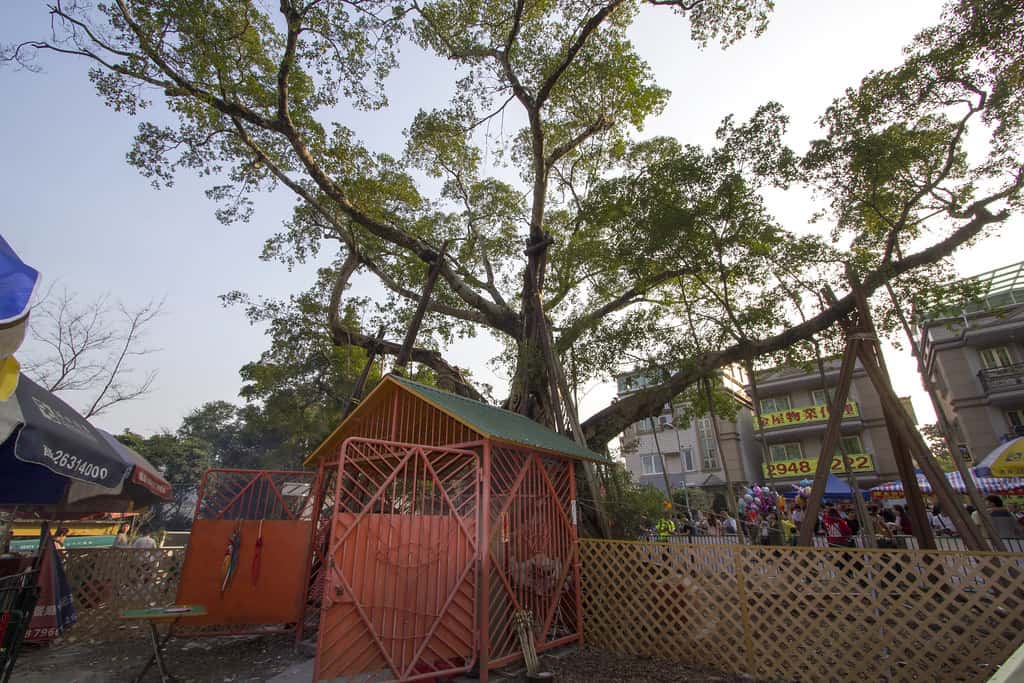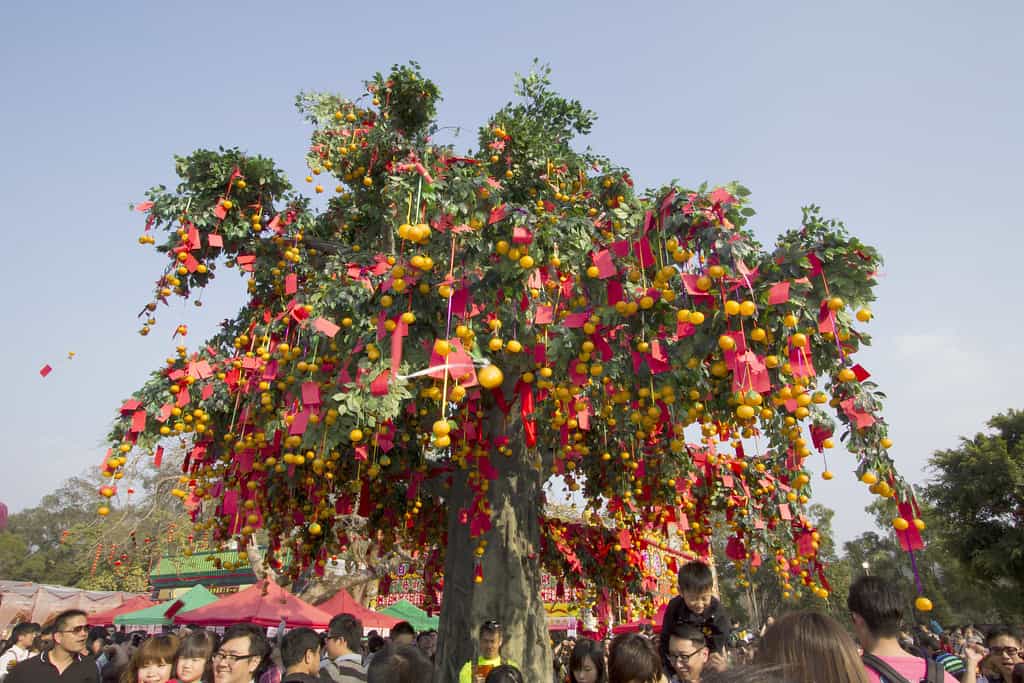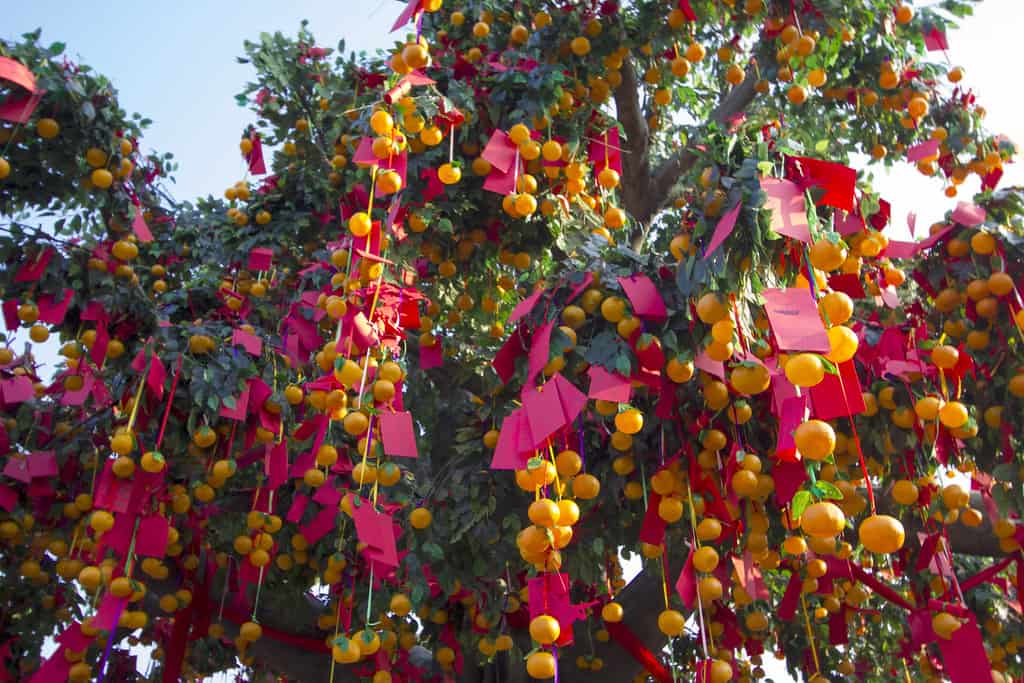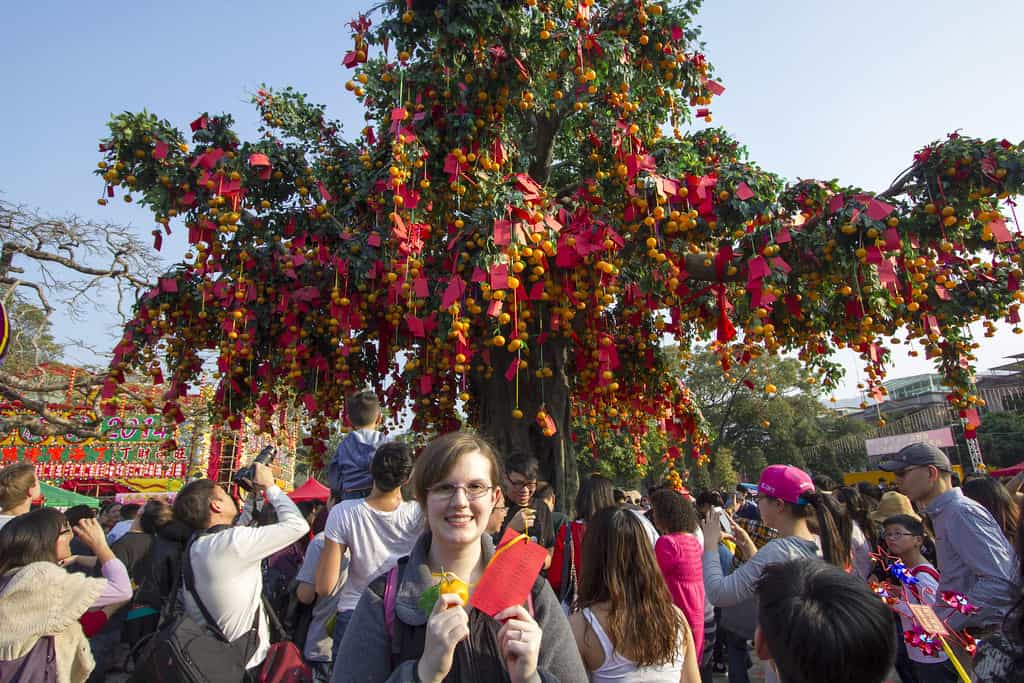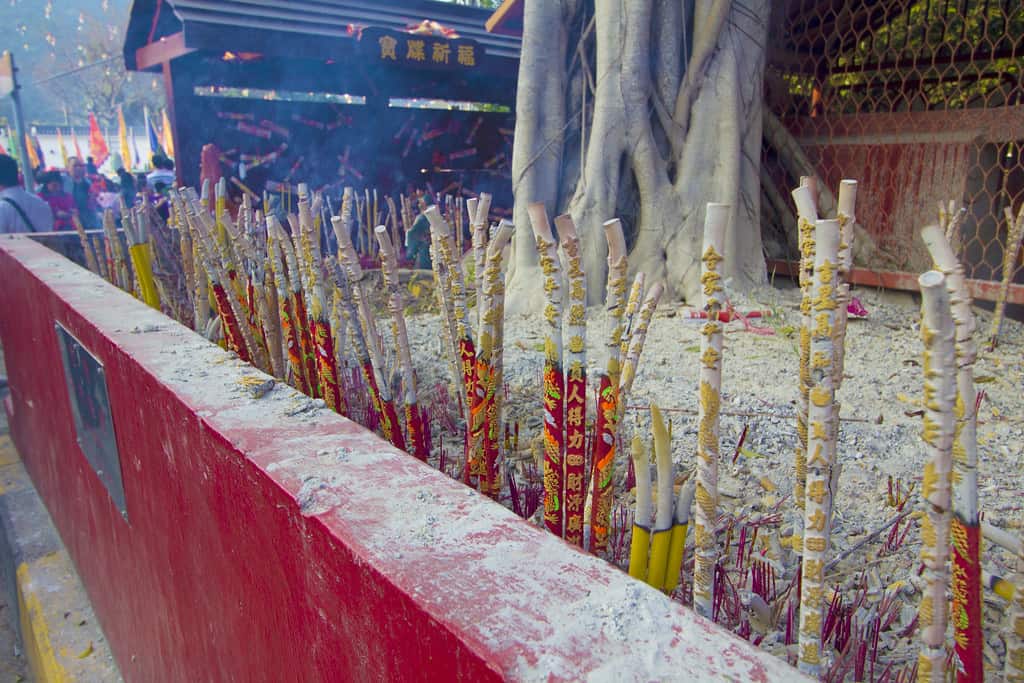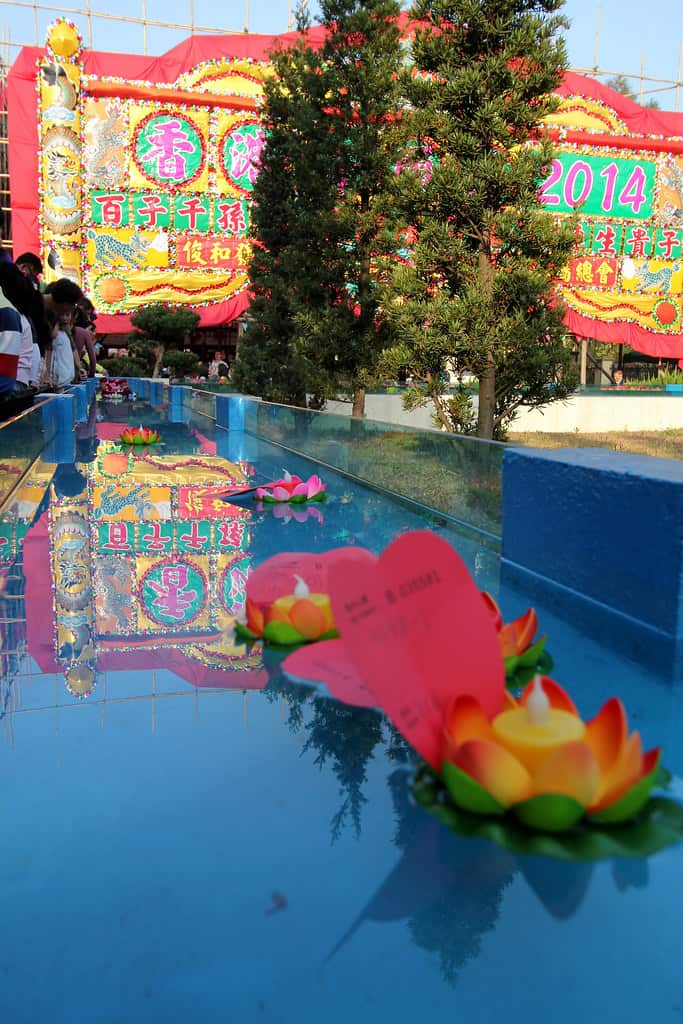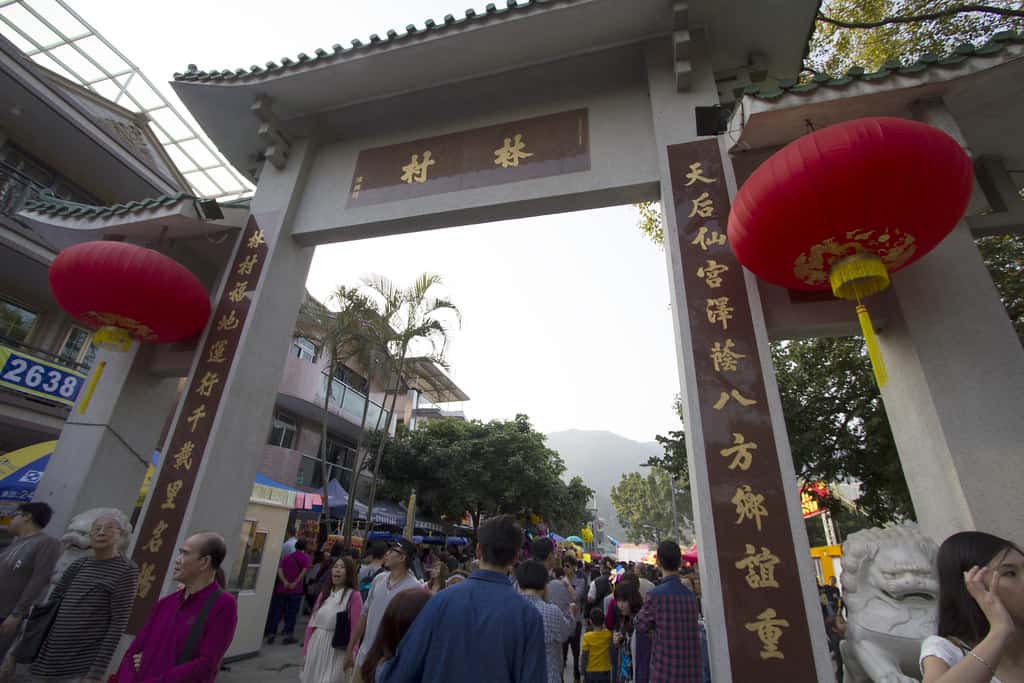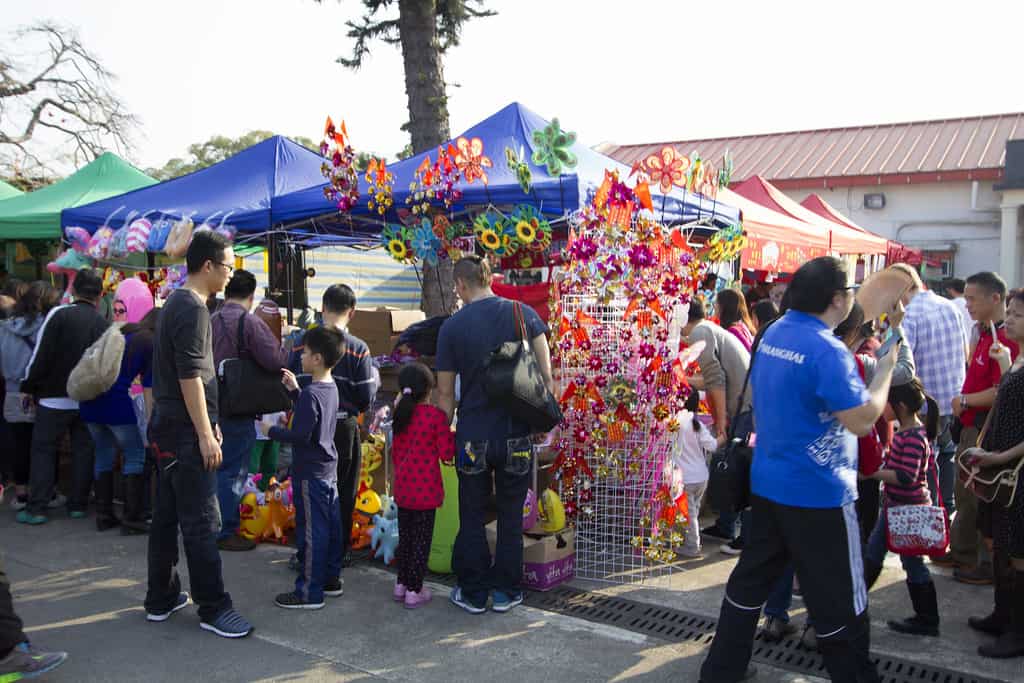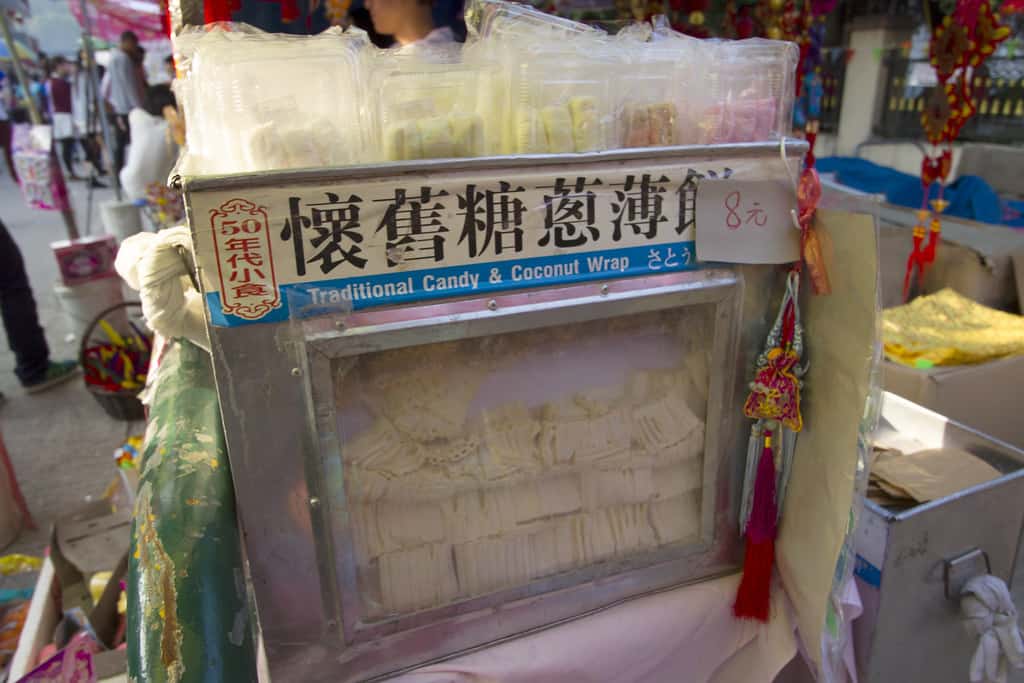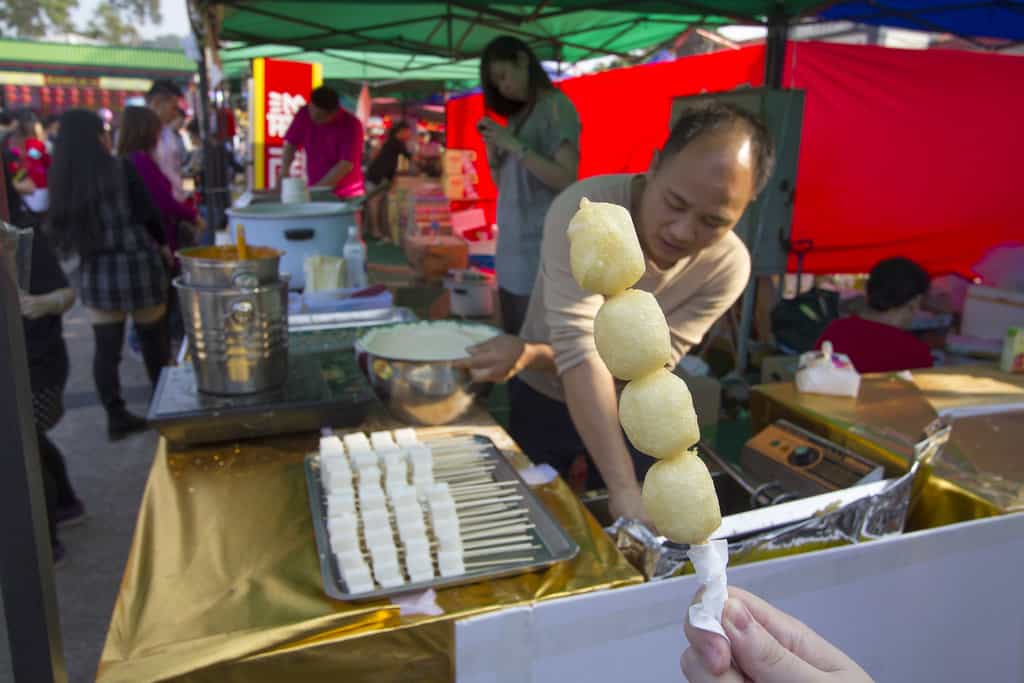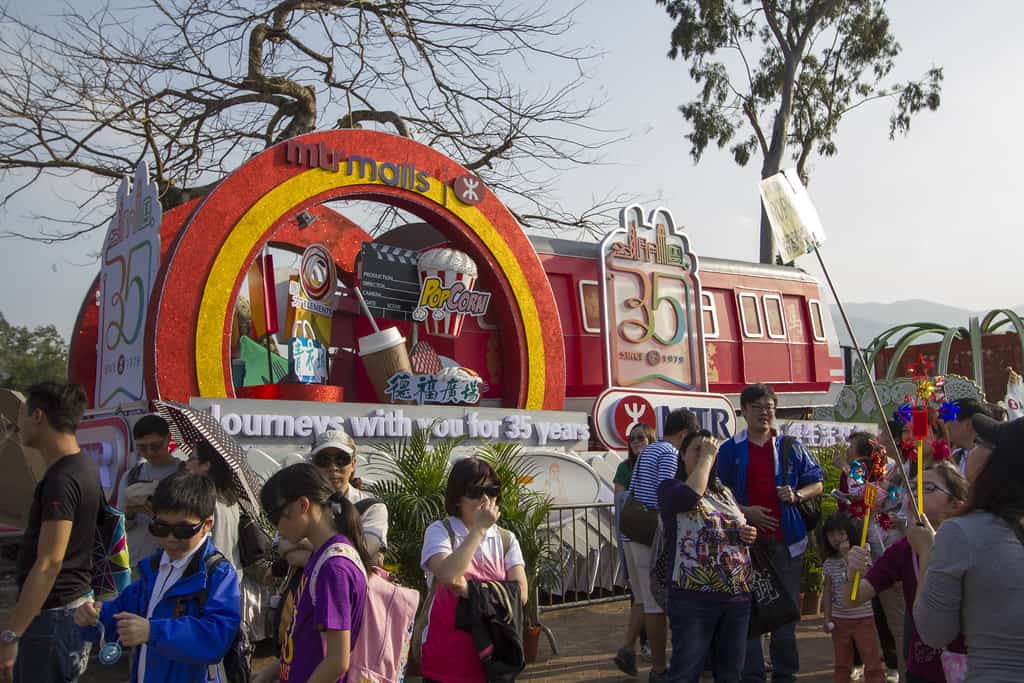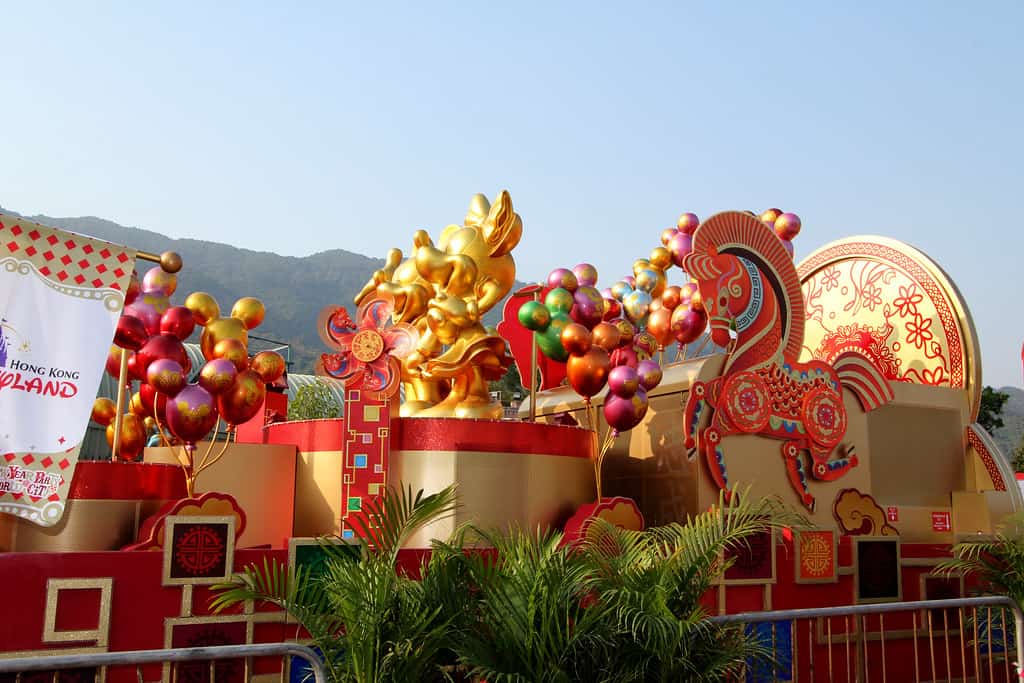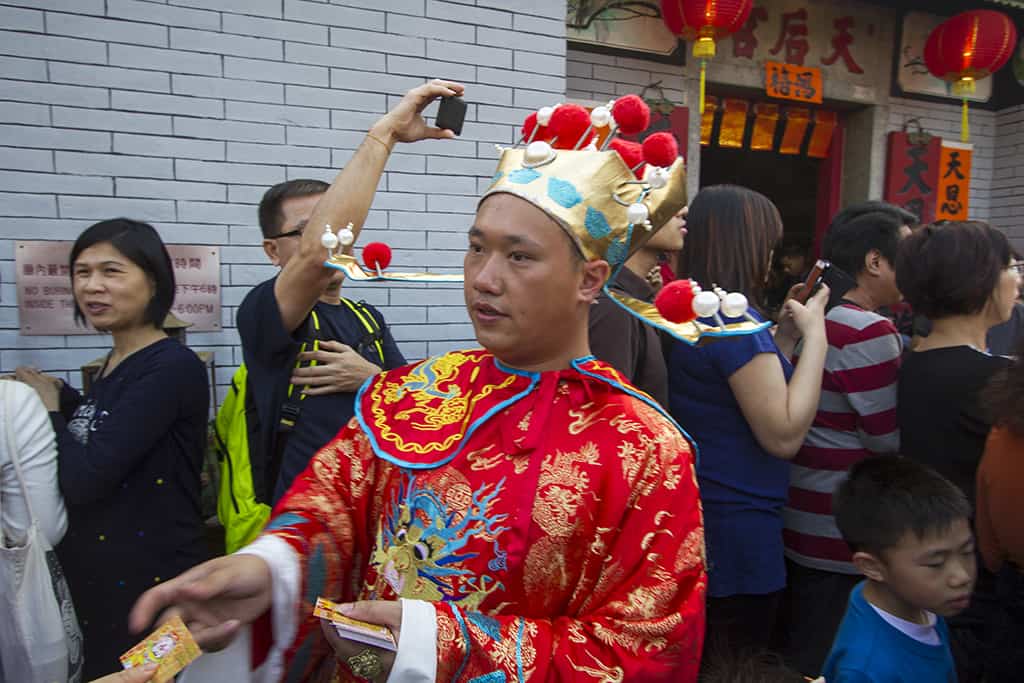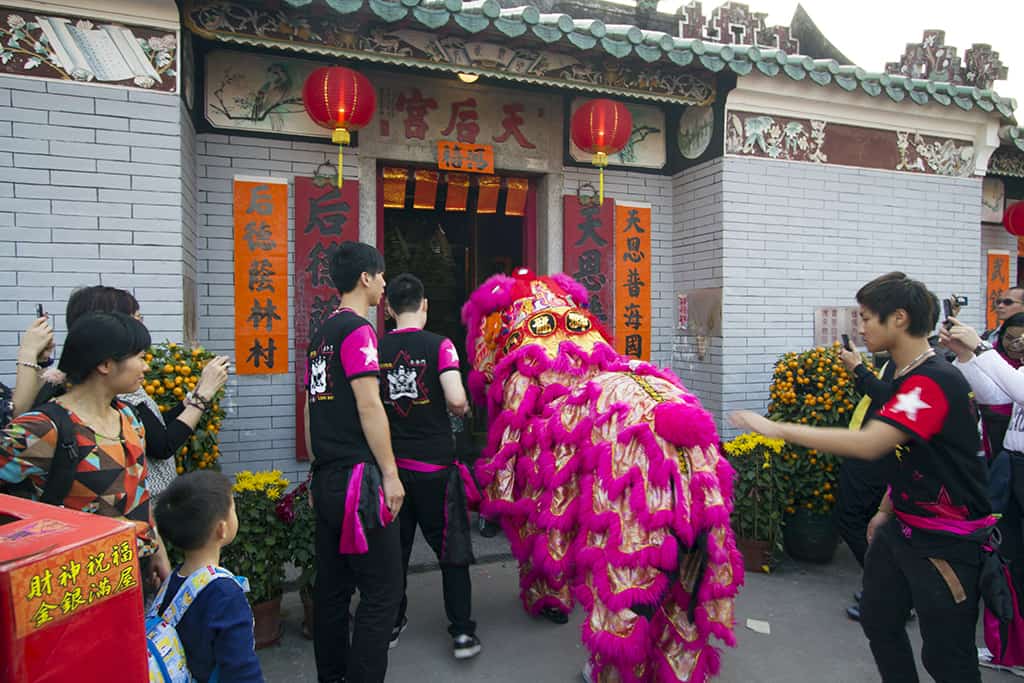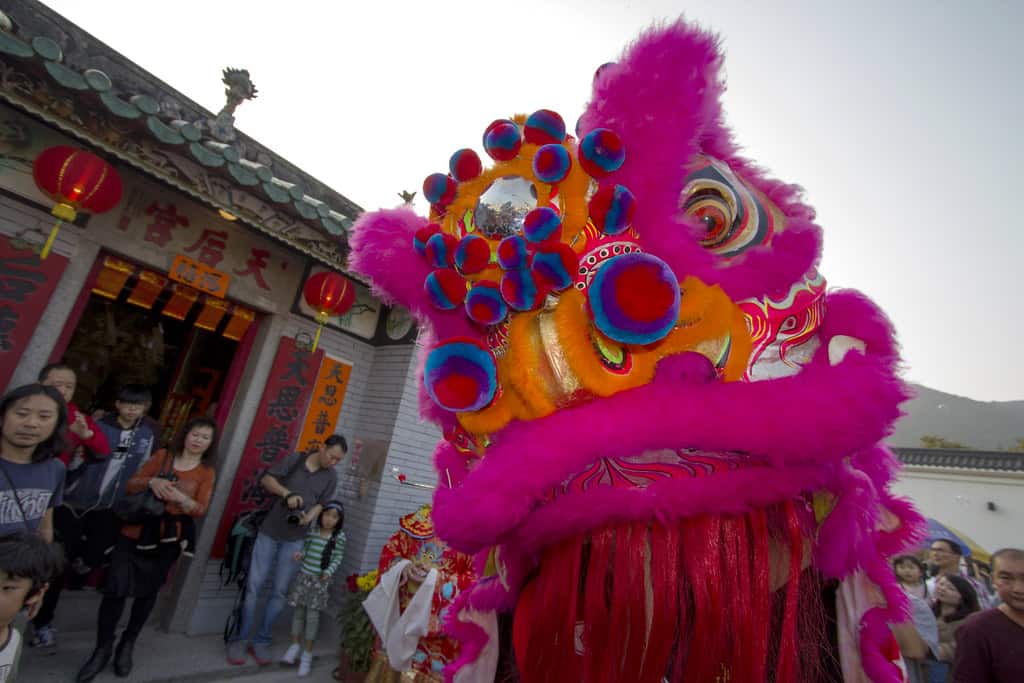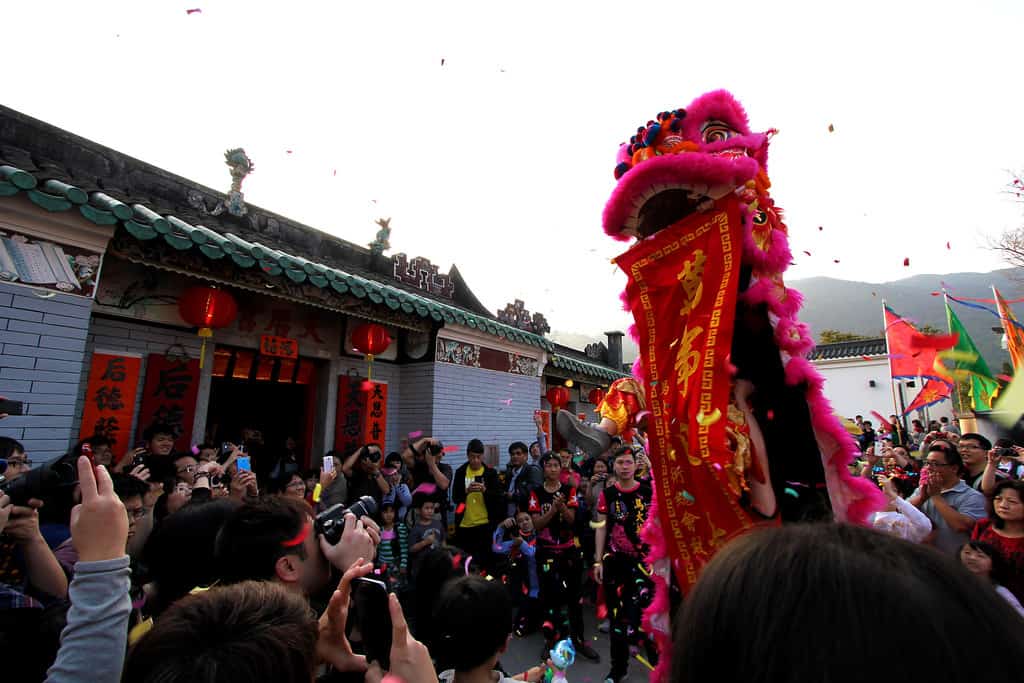Hong Kong
WISHING FOR HAPPINESS AT THE LAM TSUEN WISHING TREE
Before my much-needed break from work came to an end, Johnny and I ventured out over an hour to Lam Tsuen. Located, well, in the middle of nowhere, Lam Tsuen is comprised of 23 traditional Chinese villages. While this area would normally never be frequented by visitors, during Chinese New Year people flock here by the bus loads.
So just why do people even bother making the trek to this remote village? To see a tree.
Actually, it’s two trees. The banyan tree pictured above is one of two of the famous Lam Tsuen Wishing Trees.
It is said that many years ago a fisherman threw his wishes into every tree representing Pak Kung, an earth god, for protection. Ever since, people would continue to write their wishes on joss paper, tie it to an orange with string, and then try to toss it into the trees.
People believed that if your orange successfully stuck to a branch without falling down, your wishes would come true– and the higher the branch, the better!
Of course if your wishes were granted, you would have to go back to pay your respect and thank the tree for granting your wishes.
After years of doing this, the weight and pressure from the tangled strings and oranges began to take their toll on the trees. In 2005 a large branch of the tree came crashing down and people finally realized this tradition needed to be changed.
In order to conserve the wishing trees, support beams have been installed around them, helping to alleviate some of the pressure of the wilted branches. While people still continue the tradition of tossing their wishes, it is now done so on fake trees.
After traveling so far to witness this tradition, we knew we couldn’t leave without giving it a try. So we began writing down our wishes before attempting to toss them high in the tree.
Once you’ve (hopefully) successfully got your wishes stuck in the tree, it would be best to pay your respect to the real trees and light some incense as your offering.
Now that the Wishing Trees have gained so much popularity, the whole area turns into a carnival of sorts called the “Well-Wishing Festival” during all 15 days of Chinese New Year.
Making your wish at the Wishing Trees is now only one event of many that takes place at this festival. People also write their wishes on lanterns and cast them down the wishing pool, hoping for good luck.
Next to the actual Wishing Tree you’ll find the entryway that leads through the Fong Ma Po village. The whole street will be lined with vendors selling food, gifts and other auspicious items for the New Year. It’s almost like another mini Lunar New Year Fair, selling many of the same things.
We tried to rush past the stalls without giving a proper look, but it was no use. While I generally hate paying the extortionate price of carnival food, I did give in for a few of my favorite Chinese treats that are only ever found at festivals.
One of my favorite treats, tong chung beng (糖葱餅) has no translation in English– but trust me, it’s good! It’s basically a piece of pulled sugar that is covered with a spoonful of coconut and sesame and then wrapped tightly in a crepe. These traditional snacks date back over 50 years, when they were once sold by wandering salesmen carrying the large metal containers.
Unfortunately, this is now really rare, so if you ever see a vendor selling any, buy them! These things house of multitude of texture between the crunchy wafer of sugar, the chewy crepe and the crackling of the sesame and coconut. Delicious!
The second snack we had to buy was something that might resonate with my fellow Americans. You see, in America we like to deep fry everything. Not just various meats and potatoes, but things like Oreos, Snickers Bars, Poptarts.
Well in China, they like to deep fry milk.
This has no other way to be properly described other than AMAZING. And… maybe also rich and fattening, but I’m going to go with AMAZING.
After we had our fill of Chinese desserts, we wandered around the premises looking at all of the parade floats up close from the Cathay Pacific Chinese New Year Night Parade. Since we didn’t go this year (and I missed it on TV since I was too busy being sick), it was nice getting to see all of this year’s floats.
If you’re going to brave the crowds to see the parade in person, make sure to check out my handy tips!
Following the stalls down to the end of the road, we reached Tin Hau Temple. Tin Hau is the Goddess of the Sea, which explains why there are over 100 Tin Hau Temples throughout Hong Kong, a former fishing village. This one in particular was built in the 1700s during the Qing dynasty.
As we arrived to the temple a lion dance was already taking place. Luckily there weren’t too many people, unlike during hectic Chec Hao, so we were able to get a good view of what was going on! We watched and waited for the lion to complete his puzzle and everyone cheered upon his success– followed by rushing to touch his head for even more good luck!
Getting to Lam Tsuen:
- Take the special route 63R from Tai Po Market MTR Station (during Well-Wishing Festival times only)
- Take the bus 64K or 64P from Tai Po Market MTR Station, and get off at Fong Ma Po Station.
- Take the minibus 25K and get off at Lam Tsuen Wishing Trees.
Address: Lam Tsuen Wishing Square, 8 Heung Kung Sho Road, Lam Tsuen, Tai Po
Phone:+852 2638 8026
Website: www.hkwellwishingfestival.com

